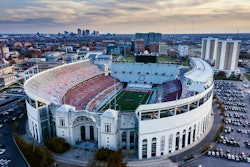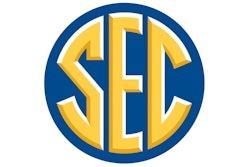|
Copyright 2013 Gannett Company, Inc. All Rights Reserved USA TODAY |
|
September 17, 2013 Tuesday
FA CHASE EDITION |
|
SPORTS; Pg. 1C
|
|
1351 words
|
| Hits continue to jar; Even as NFL emphasizes player safety, shots show culture not yet changed |
|
Erik Brady and Gary Mihoces, @ByErikBrady and @ByGaryMihoces, USA TODAY Sports
|
|
Concussion researcher Kevin Guskiewicz was out back doing yardwork Sunday afternoon when his 13-year-old son, Adam, interrupted. "Dad, you've got to see this; this is crazy," Adam said as he beckoned his father inside to see a pair of helmet-to-helmet hits delivered by Washington Redskins safety Brandon Meriweather. One of them left Green Bay Packers running back Eddie Lacy concussed. The other, on James Starks, who had replaced Lacy, left Meriweather concussed. No penalty was called on either play. Adam saw the replays of the hits at halftime of another game and wanted his father, founding director of the University of North Carolina's Matthew Gfeller Sport-Related Traumatic Brain Injury Research Center, to see them for himself. "Every time we think we've got this culture shift going in the right direction, we see stuff like that," Guskiewicz told USA TODAY Sports on Monday. "It was really unfortunate. What is wrong with that guy? Hopefully they'll be able to get his behavior modified." The questionable hits come at a time when the NFL is emphasizing player safety and reducing concussions. And the ones in Green Bay were not the NFL's only scary moments Sunday. San Diego Chargers wide receiver Malcom Floyd got sandwiched between two Philadelphia Eagles defenders and remained motionless at midfield for 10 minutes before being taken off on a stretcher. That play did not appear to be the result of an illegal hit. It is not always easy to tell what is and isn't legal. The NFL said Meriweather's hit on Lacy was under review for discipline. Dean Blandino, NFL director of officiating, said Meriweather's hit on Starks was legal. "It was helmet-to-helmet," Blandino said, "but it wasn't the crown of the helmet. They made contact with the sides of the helmet. The rule is very specific, that the contact needs to be at the top of the helmet" to be illegal. Washington coach Mike Shanahan also thought the hit on Starks was legal. He said he was not sure about the hit on Lacy. In that instance, Meriweather launched himself at Lacy with his head up, but Meriweather appeared to lower his helmet at the last instant, striking Lacy near the jaw and violently snapping his head backward. "To be honest with you, on the (Lacy hit it) looked like the running back was kind of going downhill, and when Brandon ... went for the tackle, it looked to me that it was perfect," Shanahan said. "And then all of a sudden he ducked his head. I couldn't really tell in slow motion -- because I didn't see the TV copy, I just saw the video -- exactly where that contact was. The second one on the sideline, yeah, that's what you're supposed to do. That's a legal hit." Meriweather has a rap sheet. In 2010, he was fined $40,000 for two helmet-to-helmet hits while with the New England Patriots. He was fined $20,000 for another hit a year later. "I really don't think the fines are helping," Guskiewicz said. "Guys seem willing to shell out the money. I think it is going to take suspensions that end up being a wake-up call." Tampa Bay Buccaneers safety Dashon Goldson got a wake-up call Monday. He was suspended without pay for one game for what the league called "flagrant and repeat violation of NFL safety rules." He was penalized for unnecessary roughness Sunday for a helmet-to-helmet hit against a defenseless New Orleans Saints receiver, Goldson's fifth unnecessary roughness penalty since 2011 and second of the season. He was fined $30,000 in Week 1. "The NFL has its own rules, but we're just trying to play football," Goldson told the Tampa Bay Times on Sunday. "We're not worried about those penalties; we're really not. That's just football. We learn how to tackle when we're young, and (we've) been doing this for a long time." Guskiewicz, a member of the NFL's head, neck and spine committee, thinks maybe coaches should be subject to suspensions when they have players who are recidivist violators. "Possibly, at some point, do coaches who can't deter that type of activity, or emphasize in practice to not lead with the head, at what point do we hold them accountable?" he said. "Maybe we need to begin taking it to that level. We don't know what is going on behind closed doors. Are coaches pulling that guy aside the next day and saying, 'Look at this, this is inappropriate?' "If it's going unrecognized and coaches aren't doing something about it -- I wouldn't go so far to suggest they're condoning it; I don't think they are -- but by not addressing it and not making corrections, some could argue they are condoning it." Scary moments Floyd was going over the middle on the first play from scrimmage in the second half Sunday when he was hit from behind by Philadelphia's Nate Allen just as the ball arrived and then hit at full speed from the front by DeMeco Ryans. Floyd dropped the ball and dropped to the ground. Players milled around nervously as medical personnel stabilized Floyd, an all-too-familiar tableau. He was placed on a backboard, lifted onto a stretcher and taken to a Philadelphia hospital with a neck sprain. He is not expected to play Sunday when the Chargers visit the Tennessee Titans. "I should have caught the ball," Floyd said Monday, wearing a neck brace. "It would have hurt less." Floyd described what it felt like: "All of my limbs just went limp, and there was this subdued shock throughout my whole body. Once I came to, my neck was pretty sore. ... This is like the second time in two months I've been carted off the field, but it's part of the game." Ronnie Barnes, New York Giants senior vice president for medical services, said such situations are terribly unnerving. "When there is what looks like a catastrophic injury, where you suspect somebody has neurological symptoms or they're just down on the field not moving, that's the scariest thing that can happen in sports," he said. "And we prepare for it. All the teams do. There is an emergency action plan." Barnes, who became the Giants' head athletic trainer in 1980, has seen the NFL's sideline medical management change through the years. "At one time there might have been just an emergency squad, a local ambulance squad, but clearly the NFL has beefed up significantly the standards about what should be available," Barnes said. "Two decades ago I felt it was all on my shoulders. Now I have a team of people." Along with paramedics, athletic trainers and team physicians, Barnes said, the team includes airway-management physicians in red hats who can help a player who is unable to breathe. New this year, he said, are unaffiliated neurotrauma consultants who can assist in making decisions on suspected concussion cases. Athletic trainers will lock away the helmets of players who might have concussions to keep them from going back into games, he said. And some players are, for the first time, volunteering their symptoms, he added. "It was rare for a player in the past to say, 'Check me out, I'm feeling woozy,' or, 'I have a headache, will you check me out?' In some ways it is startling, because it never occurred before. It's part of the awareness campaign, and I think it's brilliant." Matter of Time Washington nose tackle Barry Cofield thinks it will take time before rules changes and attitude adjustments lead to a cultural shift. "But I think the tide will turn," Cofield said. "Right now guys are just trained to play a certain way they have been. But I think, as these rules change, more young kids we see coming up through the ranks will be more used to avoiding head-to-head collisions." Cofield figures there is no way to eliminate concussions entirely. "There's going to be some collisions," he said. "But those blatant, head-hunting types of hits I think will be slowly but steadily eliminated." That's what Guskiewicz thinks, too. He helps coach some of his kids' teams on how to tackle with their heads up. That's why Adam alerted his father to those replays Sunday. "They get the lecture from me fairly regularly," Guskiewicz said. "That's where it begins." Contributing: Jarrett Bell in New York and Forrest Lee in San Diego Brady reported from McLean, Va., and Mihoces from Ashburn, Va. |
|
September 17, 2013
|
Terms and Conditions Privacy Policy



































